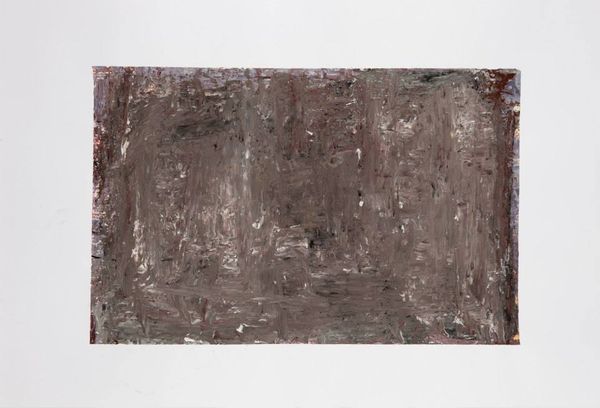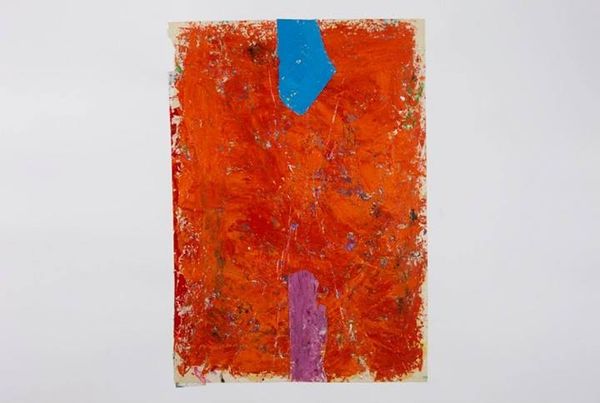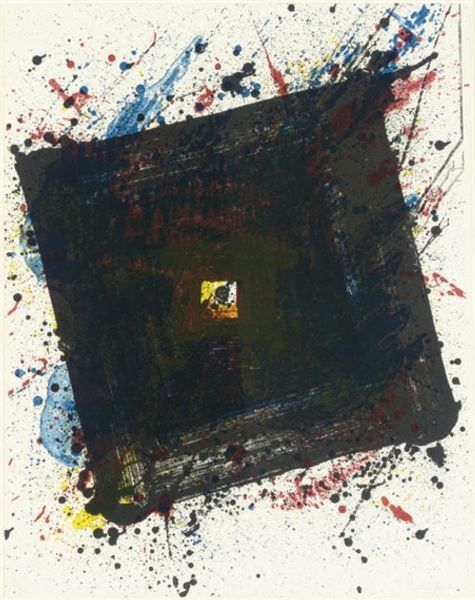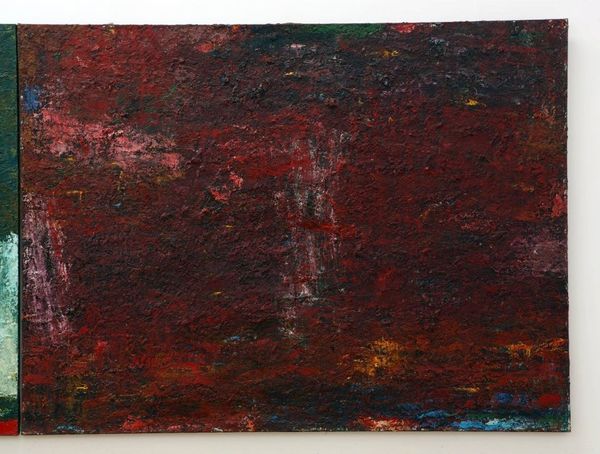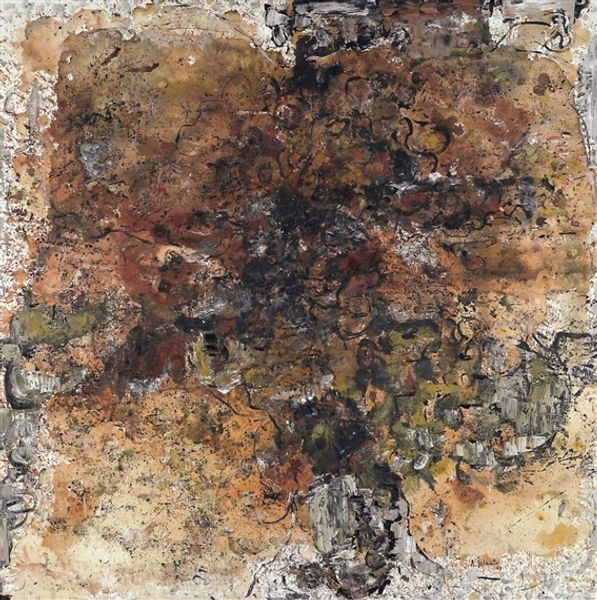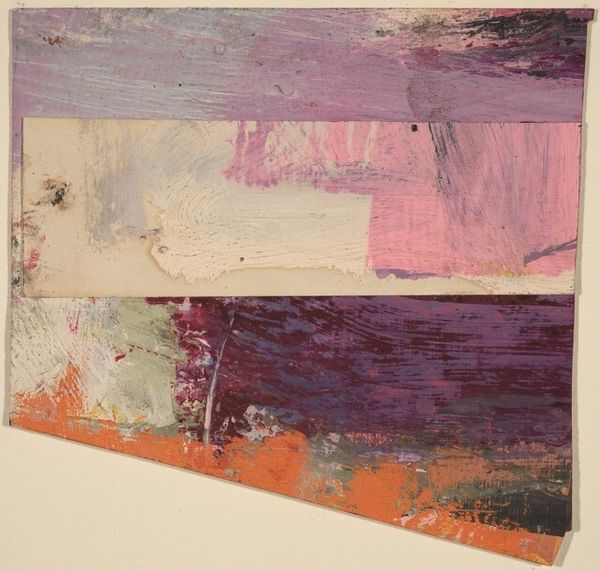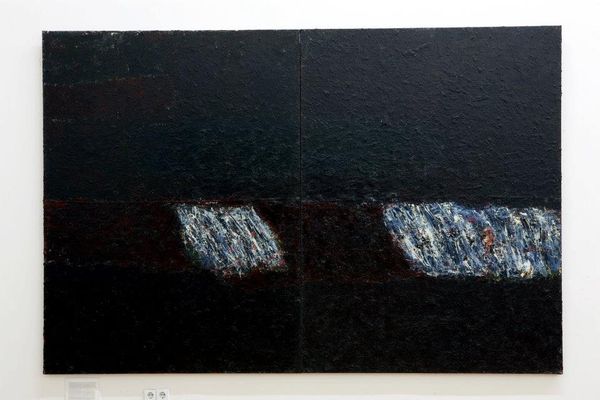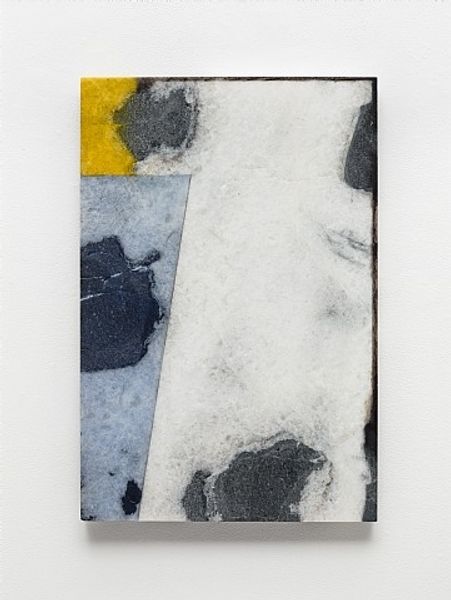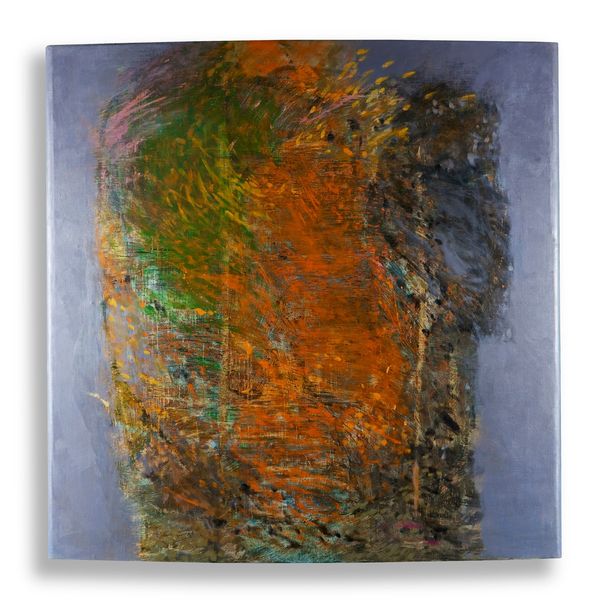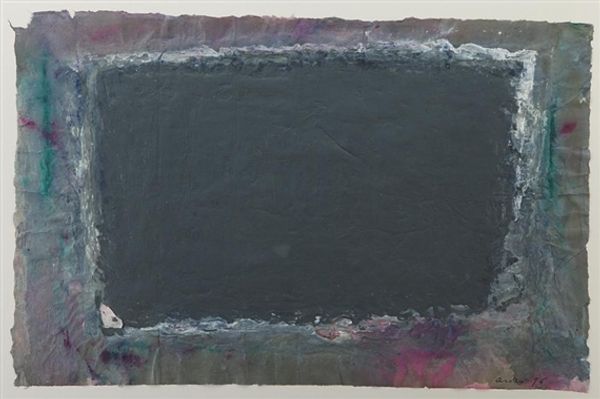
matter-painting, oil-paint, impasto
#
abstract-expressionism
#
abstract expressionism
#
matter-painting
#
non-objective-art
#
oil-paint
#
impasto
#
geometric
#
abstraction
#
allover-painting
Copyright: Tiberiy Szilvashi,Fair Use
Editor: We're looking at an Untitled oil painting with heavy impasto by Tiberiy Szilvashi. It’s, well, it’s pretty intense, a really thick application of purples and blacks. It reminds me of a storm cloud, but…still, it’s just layers of paint. What can you tell me about this work, its history, its purpose? Curator: This piece strikes me as an interrogation of what a painting *can* be in the latter half of the 20th century. The absence of a title signals a departure from traditional representational expectations. Considering its materiality and date of creation, do you think it intends to challenge the established art world norms and markets of the time? Editor: It definitely seems like a challenge, right? Like it's not "pretty" in a conventional sense. The colors are brooding, the texture is almost aggressive. Was that a common aim of the Abstract Expressionists - challenging viewers? Curator: Indeed! The thick impasto you noted plays a crucial role. It makes the viewer hyperaware of the medium itself: the paint. It makes the role of artist evident. Think of it in contrast to academic painting with it's emphasis on concealing the gesture of painting. Is this artist drawing a direct link between creative practice and socio-political statements? Editor: Hmmm… so the act of applying paint, the artist’s hand, becomes the statement? Was it about democratizing art, making it less about skill and more about…expression, or a message? Curator: Perhaps both! Szilvashi isn't interested in perpetuating old artistic traditions, instead he sought to capture attention within evolving contemporary conversations about politics, identity and the nature of art itself. What message, if any, does the artist suggest by presenting the medium of oil paint in this manner? Editor: I get it. It is about breaking free from expectations and commenting on freedom and identity. Curator: Precisely. And what appears as chaotic might have deep meaning depending on a work’s historical context.
Comments
No comments
Be the first to comment and join the conversation on the ultimate creative platform.
